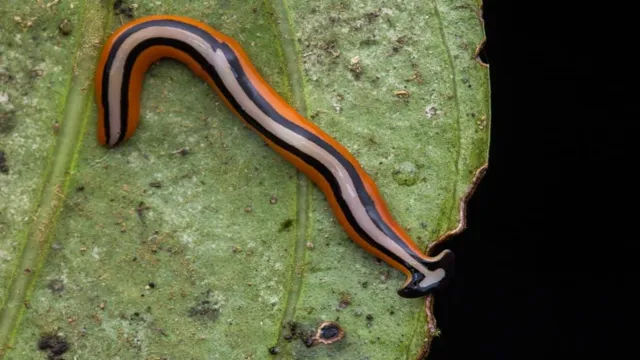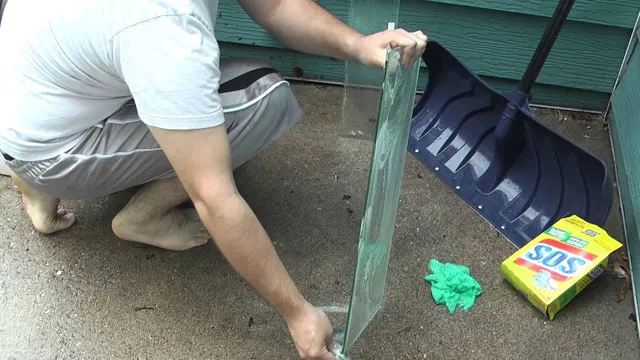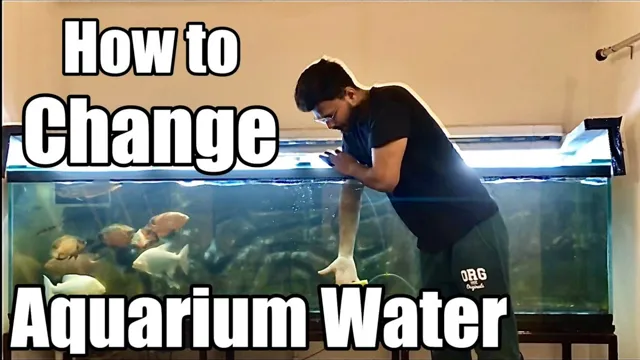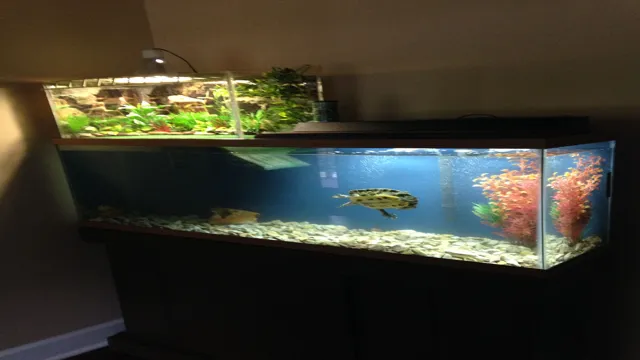Are you struggling with planaria infestations in your aquarium? These pesky flatworms can quickly become a nuisance, causing harm to your fish and disrupting the delicate balance of your aquatic ecosystem. Luckily, there are several effective methods for killing planaria and preventing future outbreaks. In this blog post, we’ll explore the different ways to eliminate planaria, from manual removal to using chemical treatments.
We’ll also provide tips for keeping your aquarium clean and healthy, so you can enjoy a thriving aquatic environment. So, roll up your sleeves and let’s get rid of those planaria once and for all!
What is Planaria?
Planaria are flatworms that are often kept as pets in aquariums. Although they can be fascinating additions to your tank, sometimes they can become too numerous or damaging to your other aquatic life. This is when you might find yourself asking how to kill planaria in aquariums.
Fortunately, there are several ways to do this, including using chemicals, removing infected plants or animals, or even using predatory fish to eat them. One of the most popular methods is using fenbendazole, which is a type of deworming medication that is commonly used for dogs, cats, and horses. When used in aquariums, it can kill planaria and other harmful parasites without harming the fish or other aquatic organisms.
So if you want to get rid of planaria in your aquarium, there are plenty of options available to help you do so.
Description of Planaria in Aquariums
Planaria are flatworms that are often found in aquariums. These small worms are usually between 1/3 inch to 1 inch in length and come in a variety of colors, such as white, grey, brown, and black. Planaria can reproduce quickly, with the ability to grow to large numbers in a short amount of time.
They feed on small animals, such as shrimp, snails, and fish eggs, making them a common issue for aquarium owners. If not properly removed, Planaria can harm other aquatic life in the tank. Fortunately, there are methods for removing Planaria from aquariums, such as using chemical treatments or manual removal.
To prevent the growth of Planaria, it’s important to maintain a clean and healthy aquarium environment with regular water changes and proper feeding habits.
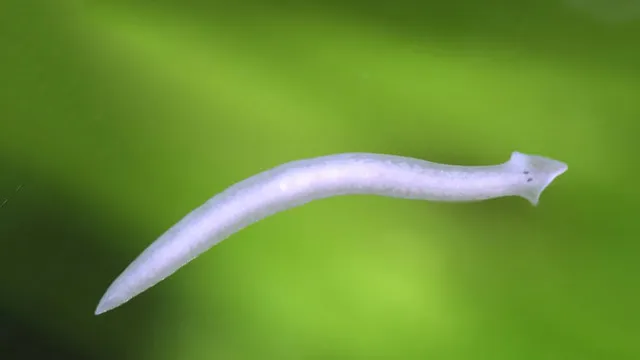
Why Should You Get Rid of Planaria?
Planaria are flatworms that are often unwanted guests in aquariums and fish tanks. These creatures can quickly reproduce and grow, causing harm to both your aquatic pets and their living environment. Planaria feed on small invertebrates and even fish eggs, making them a threat to the health of your aquatic animals.
They are also unsightly and can make your tank look dirty and unkempt. Getting rid of planaria is essential to maintain a healthy and clean aquarium. One effective way to eliminate planaria is by using chemical treatments or natural remedies like adding snails or introducing predatory fish like guppies or dwarf puffers.
So, if you want to keep your aquarium thriving and your pets happy, it’s important to take the steps necessary to remove planaria from your tank.
Preventing the Growth of Planaria
If you’re a fan of aquariums, then you may have come across planaria- small, white flatworms often found in aquariums. These creatures might not harm your fish, but their appearance can be unappetizing and unsightly. So, if you’re wondering how to kill planaria in your aquarium, there are a few things you can do to prevent their growth. (See Also: How to Dose Fertilizer in Aquarium for Healthy Plant Growth: Essential Guide)
Firstly, ensure to change the water in your aquarium regularly- planaria thrive in stagnant water. Secondly, avoid overfeeding your fish, as excess food can create a breeding ground for the worms. You can also use medication specifically for invertebrates and worms, such as fenbendazole, to treat your aquarium and kill off any planaria.
By maintaining good aquarium hygiene habits and using the right medication, you can keep your aquarium planaria-free!
Maintain Cleanliness in the Aquarium
Keeping an aquarium clean is crucial in maintaining a healthy environment for your fish and other aquatic creatures. One problem that can arise is the growth of planaria, which are flatworms that can be harmful to your aquarium inhabitants. To prevent the growth of planaria, it’s important to keep the aquarium clean by regularly removing any uneaten food, debris, and waste.
Overfeeding your fish can also contribute to planaria growth, so make sure to feed them only what they need and adjust accordingly. Additionally, avoid overusing chemical treatments as they can harm beneficial bacteria in the tank and ultimately cause more harm than good. Maintaining a clean and healthy aquarium can be a challenge, but with proper care and attention, you’ll be able to enjoy your aquatic pets for years to come.
Minimize Overfeeding the Fish
One of the biggest challenges when it comes to maintaining a healthy aquarium is preventing the growth of planaria. These small flatworms can quickly multiply and become a nuisance, feeding on leftover food and detritus in the tank. While there are chemical treatments available, prevention is key.
One way to prevent planaria growth is to minimize overfeeding the fish. Only feed them what they can consume within a few minutes and remove any excess food immediately. Uneaten food can quickly decompose, leading to an increase in organic matter that planaria thrive on.
By controlling the amount of food that is introduced into the aquarium, you can create a healthier environment for your fish and discourage the growth of planaria. Remember, a little restraint in feeding can go a long way in preventing unwanted pests in your aquarium.
Remove Dead Fish and Plants Immediately
Planaria can be a nuisance in your aquarium, especially when they grow in numbers. One way to prevent their growth is by removing dead fish and plants immediately. Dead fish and plants are a source of food for Planaria, and if left unattended, they can attract more of these flatworms to your tank.
A good practice is to regularly check for any dead organisms in your aquarium and remove them promptly. This will not only prevent the growth of Planaria but also maintain a healthy and clean environment for your aquatic pets. Remember, prevention is always better than cure when it comes to dealing with Planaria.
So, keep a close eye on your aquarium and make sure to remove any dead fish or plants right away.
Ways to Kill Planaria
If you’re struggling with planaria in your aquarium, there are a few ways to get rid of them. First, you can try manually removing as many as possible with a turkey baster or pipette. This will take some time, but it can be effective if you stay consistent. (See Also: How to Make a Hydroponic Aquarium: Step-by-Step Guide for Indoor Gardening)
Another option is to use fenbendazole, which is a medication commonly used to treat parasites in dogs and cats. It can be added to the water in your aquarium and has been shown to be effective in killing planaria. Lastly, you can try adding some shrimp or other fish that are known to eat planaria, such as loaches or bettas.
However, be careful not to add too many of these creatures at once and be sure they are compatible with your current aquarium inhabitants. No matter what method you choose, remember to keep monitoring your tank and adjust as necessary. By staying proactive and aware, you can successfully eliminate planaria from your aquarium.
Using Natural Predators
Planaria are a common issue for aquarium keepers as they can harm fish, snails, and shrimps. While there are chemical treatments available to get rid of planaria, another method is to use natural predators. One option is to introduce assassin snails, which will eat planaria and also thrive in the same water parameters as other aquarium life.
Another predator to consider is the rabbit snail, which will eat planaria, and also add variety to the tank’s ecosystem. Lastly, if you have a freshwater tank, introducing certain fish species like clown loaches or pea puffers can help keep the planaria population under control. Using natural predators is both effective and safe for inhabitants of the tank, making it a great option for those looking to reduce planaria without resorting to chemicals.
Using Commercially Available Products
Planaria, Commercially Available Products If you’re struggling with planaria infestation in your aquarium or fish tank, you may be looking for effective ways to get rid of them. Luckily, there are several commercially available products that can help you eliminate planaria. One popular choice is fenbendazole, a medication commonly used to treat parasitic infections in fish.
It’s effective against planaria, as well as other types of worms, and comes in the form of a powder or tablet that is added to the water. Another option is No-Planaria, a product designed specifically for eliminating planaria. It contains a safe and natural formula that won’t harm your fish or other aquatic creatures.
Simply add it to your tank, and it will begin targeting and killing planaria within 24 hours. It’s important to note that whichever product you choose, you should carefully follow the instructions and dosage recommendations to ensure the safety of your fish and the effectiveness of the treatment. By using a commercially available product, you can say goodbye to pesky planaria and enjoy a healthy and thriving aquatic environment.
Performing Manual Removal of Planaria
Planaria Have you noticed an abundance of planaria in your aquarium? These small, flatworm-like organisms can be a nuisance for fish and plant life, so it’s important to take action if you see them. One effective way to get rid of planaria is through manual removal. This involves physically removing any visible planaria using tools such as tweezers or a pipette.
However, it’s important to be careful during this process and avoid accidentally harming any other organisms in your aquarium. Another option is to add certain substances to your aquarium that are toxic to planaria, such as copper sulfate or fenbendazole. It’s important to do your research and consult with a professional before attempting any chemical treatment.
By taking these steps, you can effectively remove planaria from your aquarium and keep your aquatic life happy and healthy.
Conclusion
In conclusion, killing planaria in your aquarium is not rocket science. With patience, diligence, and the right tools, you can easily rid your tank of these pesky critters. Remember, prevention is always better than cure, so make sure to maintain good aquarium hygiene and avoid overfeeding your fish. (See Also: How to Cool Down an Aquarium Without a Chiller: Top Tips and Tricks.)
And who knows, maybe someday, we’ll find a way to turn these little buggers into something useful like luxury caviar or gourmet escargot!”
FAQs
What causes planaria to grow in an aquarium?
Planaria thrive in environments with overfeeding, poor water quality, and excessive organic matter.
How can planaria harm the aquarium ecosystem?
Planaria can eat small fish and shrimp, compete with beneficial organisms for resources, and disturb the overall balance of the aquarium.
Can planaria be manually removed from the aquarium?
Yes, planaria can be physically removed using a siphon, tweezers, or a dedicated planaria trap.
What types of fish are effective at controlling planaria populations?
Some fish species, such as loaches, dwarf chain loaches, and pufferfish, are known to actively hunt and eat planaria.
How can water quality be improved to prevent planaria growth?
Regular water changes, careful feeding habits, and the use of high-quality filtration media can help maintain a healthy aquarium environment.
Are there any commercial products available for planaria control?
Yes, there are several chemical treatments available, but they should be used with caution and only as a last resort.
How can planaria infestations be prevented in the first place?
Monitoring and maintaining proper water quality, avoiding overfeeding, and quarantine new fish and plants can all help prevent planaria infestations.

